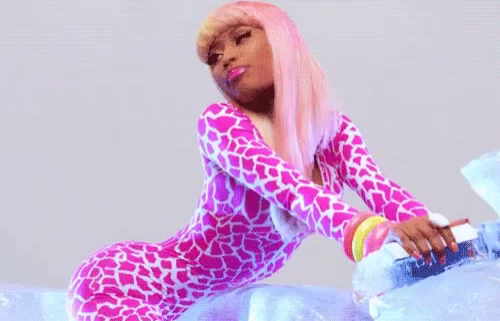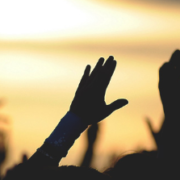Published in Culture Clash — a weekly column in The Tribune — on November 1, 2017
Once again a video of high school students has made its rounds on social media. As usual, many clicked the play button with the intention of getting another excuse for perpetual disdain for anyone younger than them. The general public is all-too-ready to point fingers at them, blame them for their circumstances and allow negative story lines to completely eclipse successes, progress and actions worthy of celebration. This time around the country is scandalized by a video of high school girls participating in a dance competition on an in-school fun day. Even if you haven’t seen the video, you probably have an image in mind and it’s probably no more exaggerated than the view of those who have seen it. While it is perplexing that such an event took place on public school grounds, much of the conversation about it has blown it out of proportion and conveniently oversimplified some elements while amplifying and projecting preconceived ideas and prejudices on to others. Rather than examine the content of the video and its implications, I’m interested in focusing on the way we, Bahamian people of other (older) generations, talked about it and revealed our own truths.
Objectification of Women and Girls
The bodies of women and girls have long been seen as dual-purpose — meant for the enjoyment of men during sex and repopulating the earth through its reproductive functions. Misogynoir complicates this for black girls who deal with a double whammy — the intersection of gender and race. As girls’ bodies change, they are subjected to the lustful attention of men and boys, but also to the judgment of society at large which makes absurd assumptions about them. As breasts grow, hips widen and curves form, people start to wonder about their sexual lives. Are they having sex? How? Do they have boyfriends? Do they know how they look, particularly to men and boys? Are they dressing appropriately, deflecting attention and avoiding the male gaze?
In conversations about the video, there were far too many comments about the bodies of the girls shown dancing. Most people seemed to mistake one of the students for a teacher. They decided, of course, this was her fault. How could her body be that size and shape? Why would she move it in that way? What made her wear that? Didn’t she know how she would look?
Already, before getting to the content or the context of the video, this student was at fault for something. She is deceptive. She made us think she was an adult. She is a teenager living in a body that could easily belong to an adult. She might be considered sexy by boys and men alike. Whose fault is this? Who should be punished? What could she do better, or just differently, to stop our minds from arriving at the wrong conclusions? Is it her job to fix or control our thought processes?
Girls Get the Blame
This is not unlike the recent debates in the US about girls being sent home for wearing clothes school administration considered potentially “distracting” to boys, or the trial women and girls are on when they report sexual assault. There are always people and policies insisting we must have done something wrong to attract unwanted attention, and that it is our job to regulate the behaviour of men and boys because they, by nature, have no self control.
From a young age, girls are taught to dress, sit, walk and speak in specific ways so that as girl, and later on as women, can protect ourselves. We are told to make ourselves smaller and quieter. The goal is to go unnoticed. Girls are not to laugh too loudly, speak too much, or show too much of their bodies. By doing any of these things, we become human and our existence is noticed. When our presence it noticed, the first thing people see is our bodies because it is the most visible part of ourselves. Still, our bodies are not seen like the bodies of men and boys. Our bodies are automatically reduced to orifices and incubators and some would have us believe this is the natural order of things, that men and women are wired this way, but that is far too convenient for one sex. It is far too dehumanizing for the other. It is the easy way out of a serious conversation about the outright refusal to see women and girls as human beings.
Sexualization by Adults
The girls in the video dance, and the way they dance is not unlike the way people in their 20s or 30s dance, or danced when they were in high school. It is not a great departure from the body movements of our ancestors, or their celebrations of womanhood. There has always been gyration, expressions of happiness and what we may now see as theatrics. The dances practised now are obviously inspired by more than our history, including trends in music and music videos and new takes on old moves emerging across the African diaspora. Being shamed for the ways our bodies move, for whatever reason, is an assault on ancestry, culture and body autonomy. Reducing dance to a mimicry of or motivation for sex is a gross misinterpretation at best and misogyny in the form of the objectification and dehumanization of women at worst. There is no way to look at the video and determine the sexual histories or proclivities of the people in it. The way they danced did not provoke this kind of thinking. Adults are responsible for the sexualization of children and it can start in small ways. Look at the onesies that label babies as “sexy” and the like. Note the comments on baby pictures advising parents to get a gun, or predicting which infants will be heartbreakers. Who is really the problem?
Fear of Sexuality?
We are afraid of sexuality. This fear has held us back from necessary action. It has prevented parents from talking to their children about sex. It has locked schools and teachers into teaching abstinence only, knowing it is not realistic for everyone. It has made room for men and boys to wear their sexuality proudly and boast about sexual experiences while encouraging women to either be “pure” or pretend to be pure to avoid disparaging labels men and boys do not worry about wearing. Why can’t we acknowledge we are sexual beings? How can we all have sex, but pretend no one else does? Even for those among us who are not sexually active, is it impossible to be sexual? Do we think sexuality is specific to or limited to sex? Were there not women before us who celebrated their daughters’ first periods, and their own fertility? Did they never dance, without inhibition, in whichever ways the music moved them?
We have a problem with sexuality, and we are not the only ones.
This difficulty is tied to misogyny, homophobia and historical trauma. Until we, as adults, abandon our comfort zones of suppression and false superiority, we will not be able to raise sexually aware children who can assert themselves to practice body autonomy, seek consent, care for their bodies, and make healthy decisions for themselves. They don’t have to wait for fun days or dance competitions to express themselves sexually. Perhaps we should be more concerned about what we don’t see, all because we’ve taught them to be invisible.












Leave a Reply
Want to join the discussion?Feel free to contribute!